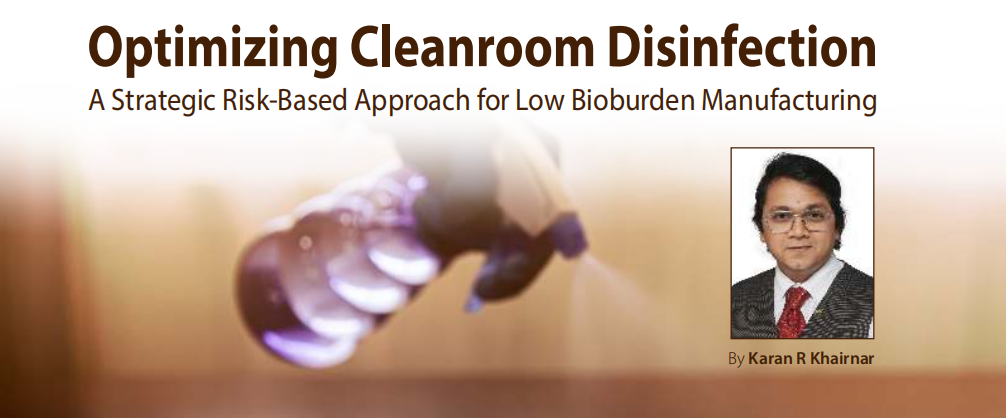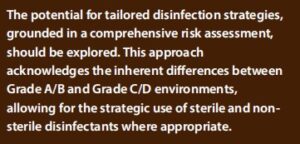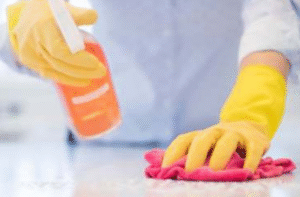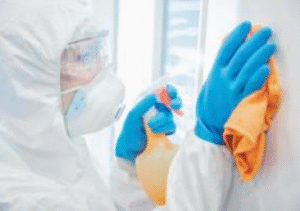Optimizing Cleanroom Disinfection: A Strategic Risk-Based Approach for Low Bioburden Manufacturing

In the competitive landscape of biopharmaceutical manufacturing, operational efficiency and regulatory compliance are paramount. This analysis addresses the optimization of cleaning and disinfection protocols for low bioburden drug substance production within Grade C and D cleanroom environments.
Leveraging a risk-based approach, a strategic framework for disinfectant selection, balancing regulatory expectations with practical operational considerations is important.
While regulatory guidelines typically stipulate sterile disinfectants for Grade A and B environments application, their blanket application to Grade C and D areas, particularly for low bioburden products, can be optimized through a comprehensive Contamination Control Strategy (CCS) assessment. This approach enables a refined disinfection strategy, prioritizing a balanced risk assessment.
The potential for tailored disinfection strategies, grounded in a comprehensive risk assessment, should be explored. This approach acknowledges the inherent differences between Grade A/B and Grade C/D environments, allowing for the strategic use of sterile and non-sterile disinfectants where appropriate.
Risk-based disinfectant considerations for Grade C and D in the CCS for low bioburden manufacturing facilities
Product Risk Profile: The final product is a low bioburden drug substance, not a terminally sterilized parenteral product. Production utilizes closed, single-use systems with stringent bioburden limits, mitigating inherent contamination risks.
Environmental Risk Assessment: From a manufacturing operations perspective, the facility’s design, concentrating on Grade C and D environments and omitting Grade A/B processing, streamlines the process and reduces potential contamination risks or sterility assurance. The implementation of 0.2-micron filtered disinfectants from trusted suppliers, coupled with high-purity water dilution (e.g. WFI, DI water), reinforces contamination control within the operational workflow.
contamination control within the operational workflow.
Disinfectant Efficacy and Suitability: Focus on the chemical properties of the disinfectant, diluent water quality, and application method, rather than solely on sterility. Prioritize disinfectants with proven efficacy against relevant microorganisms.
Implementation Strategy: Robust Risk Mitigation Controls
To ensure cleaning or disinfectant product quality and safety, the following control measures are essential:
Strategic Disinfectant Selection: Employ disinfectants specifically formulated for cleanroom environments, with documented efficacy.
Diluent Water Management: Utilize high-grade water (e.g., WFI) with continuous monitoring and adherence to pharmacopeial standards.
Standardized Application Procedures: Establish clear procedures for disinfectant application, concentration, and contact time, with comprehensive personnel training.
Comprehensive Environmental Monitoring: Implement a robust monitoring program to detect and address potential contamination issues.
Personnel Qualification: Ensure all personnel are adequately trained on proper disinfection techniques and the importance of maintaining a clean environment.
Periodic Disinfectant Validation: Conduct regular validation of disinfectant effectiveness against relevant isolates and with the introduction of new surfaces.
Process and Garment Control: Utilize closed system equipment and implement robust garment control practices, including washed and sterilized garments as needed.


Value Proposition
By adopting this risk-based approach, manufacturers can:
- Maintain stringent contamination control and regulatory requirements, ensuring product quality.
- Enhance regulatory compliance through a well-documented risk assessment.
- Optimize operational efficiency by reducing unnecessary sterilization processes.
- Reduce cost associated with unnecessary cleaning and disinfection load pattern sterilization and filtration processes.
Conclusion
A strategic, risk-based approach to cleaning disinfectant selection in low bioburden manufacturing enables a balance between regulatory compliance and operational efficiency. By implementing rigorous controls and conducting thorough validation, manufacturers can confidently utilize non-sterile disinfectants in Grade C and D environments, ultimately enhancing overall contamination control and optimizing production processes.
The author of this article, Karan R Khairnar is PCQI & IRCA Pharmaceutical Quality System Associate Auditor, and Global Technical Consultant Manager, Life Sciences, ECOLAB.

